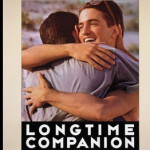Eric Rofes argues in Dry Bones Breathe that while AIDS the epidemic is still with us, AIDS the crisis is not. The disease that has infected as many as half of all urban gay men no longer dominates our psyche as it did in the ’80s. While acknowledging AIDS as a tragedy, many of these men, both positive and negative, have moved on—living, working and loving in ways not fixated on the virus. Rofes, a longtime activist, charges that his fellow “AIDS leaders” remain stuck in an AIDS-as-emergency mentality and, by recycling prevention programs from the mid-’80s, alienate the very men they claim to serve. Dry Bones Breathe challenges us to create a more holistic approach that recognizes HIV as only one of many health threats gay men face. At first glance, it’s a frightening theme, especially for those of us with HIV. His message could be used to cut Ryan White funding, eliminating access to prescription drugs and many important services. It could cause PWAs to be forgotten and left to die. The risks are real. Yet, in reading this book, I couldn’t help but reflect on my own life and see the truth in what Rofes says. While my friends still support my ongoing struggles, they themselves no longer live in constant fear of HIV. Rofes asks us to accept this reality and do prevention based upon it.
[EXCERPTS]
I believe many gay men in America who have survived the first two decades of AIDS share a paradoxical situation. We inhabit worlds where suddenly fewer are sick and fewer are dying. The tremendous weight of loss has eased and the terror within has abated. It feels like we are taking our first deep breaths since 1981. It feels like AIDS, as we have known it, is over.
Yet people are still dying. And people are still getting infected, including a new generation of young gay men. Many of the infected remain on pins and needles, dreading new health problems, wondering whether their success on protease inhibitors represents the end of the storm or simply the eye of the hurricane. How can some of us have this feeling that AIDS is over when we have the knowledge that it is not? How can two such different understandings coexist?
From the onset of the epidemic, AIDS emerged as two distinct entities: AIDS the biomedical syndrome and AIDS the event. Some activists fought to prevent this split in the early 1980s…. [But] try as we might to prevent AIDS from becoming stigmatized, because of the unexpectedness of its arrival, the fury of its force and the populations it targeted, we watched helplessly as [the media, public health officials and antigay crusaders] attached a range of cultural meanings to the epidemic…
Before we knew it, AIDS the sociocultural event overshadowed AIDS the disease, and different communities adapted the event to suit their own needs. Swiftly, AIDS became a magnet for countless anxieties, misunderstandings and social misgivings. For urban gay men, the event rapidly became marked by three key meanings: (1) AIDS meant a quick and usually ugly death, (2) AIDS meant an end to the gay sexual cultures of the 1970s, and (3) AIDS meant most of our friends would be wiped off the face of the earth within a very short time…
On a visceral level, we [still] experience AIDS as awful, ugly, powerful and intransigent. For many gay men throughout America, the acronym AIDS resonates powerfully with fatality, sexual repression and cataclysmic loss. Yet this no longer is how everyday life feels to us. Our social practices and daily experiences often have shifted dramatically. We know people with AIDS who have survived 15 years. We have HIV positive friends who are healthy, active and engaged with life. We know Lazaruses who have returned from long periods on the brink of death and now seem filled with energy and activity. On hearing a friend has become infected, we no longer quickly write him off as an inevitable death…
The avalanche of AIDS hit during a cultural moment when gay liberationists had struggled to free us from guilt and repression. During the mid- and late 1980s, in many urban centers, gay male sexual cultures virtually dried up. There were [even] a few years in San Francisco when it was difficult to find a place to dance on a Friday or Saturday night or anything resembling a legitimate sex club. Fast-forward a decade, and San Francisco, Los Angeles and New York City each offer more than a dozen spaces for men to meet and have sex. The evolution of circuit parties drawing thousands of men to large urban centers over holiday weekends has replaced the disco soirees of the 1970s. Gay ghettos are again active sites for unabashed cruising and sexual pickups.
The surviving men who inhabited sexual spaces in the early 1980s are now in their late 30s, 40s, 50s and older. Our generation does not occupy a dominant position in most contemporary gay male sex venues. Instead our places have been filled by men in their 20s and early 30s. The impact of AIDS on these men’s sexualities is extraordinarily different from our own. They came out during the Reagan-Bush-Gingrich years, a time when gay leaders sought public acceptance through conformity to heterosexual norms [and] maligned [the] belief that sexual freedom is valuable and life-affirming.
What’s more, these young men’s entire adult sex lives have been lived under the cloud of the epidemic. From the start, they have had to contend with profound linkages between gay sex and disease. The primary language about sex placed in their mouths and wired into their brains has a vocabulary of risk, condoms and safer sex. Instead of living through the period of gay liberation, then having a house fall on them, they’ve constructed their sexual identities and networks amidst the reality of a rapacious sexually transmitted virus.
Yet the formal structures of gay community life have not acknowledged these shifts. AIDS organizations, gay activists, HIV prevention campaigns, queer cultural events and gay men’s literature all continue to operate out of assumptions and understandings rooted in the the 1980s.
The failure to change with the times and work with gay men in their present experience of the epidemic is not without cost. Young gay men experience high levels of alienation from [their] community. Many feel patronized, lied to and strangely ignored by gay public officials, organizational leaders and journalists. This alienation is in large part a response to the tremendous dissonance between their everyday experience of the epidemic and the bizarre ways in which that experience is reflected back to them through lenses as diverse as mainstream movies, HIV prevention campaigns and mass gay fund-raising events. It leaves young gay men without trust in the leadership and institutions of their communities.
Yet it is not only young gay men who experience this dissonance. Middle-aged and old gay men who have found ways to come to terms with the decimation AIDS has wreaked find the continuing rhetoric of crisis debilitating and inauthentic. These men are put in a position of either sacrificing their own hard-earned acceptance of the epidemic or exiting community life. Many are pressured to feel either guilty or wrong for the shift they have made. To remain involved in community life requires them to anesthetize their emotions and deny their perspectives.
The costs of continuing to operate out of a paradigm of AIDS forged in the 1980s go beyond this pervasive alienation. The failure of HIV-prevention efforts to protect large numbers of at-risk gay men from becoming infected is increasingly related to their failure to speak to the realities of gay men’s lives.
AIDS prevention programs that do not radically reinvent themselves may find themselves out of business in the next few years…. It was one thing to expect gay men to practice safe sex 100 percent of the time in the context of 1985, when many expected this sacrifice of sexual pleasure to last only another year or two. It is quite another thing to maintain similar expectations in 1998, when becoming infected does not promise a swift and ugly death, and we have been asking men to forgo such activities for almost 20 years.
This raises an issue prevention leaders seem unable to confront: Since 1996, we’ve known many men who have made remarkable recoveries thanks to combination therapies, yet we also expect this knowledge to remain compartmentalized, separated from the information men factor into social and sexual strategies. We read about the so-called morning-after pill and notice that media coverage always includes doctors bemoaning the powerful effect they fear disclosure of post-exposure treatment might have on efforts to halt transmission. All our efforts to improve the possibilities of what happens when one is infected are expected to have zero effect on prevention.
If we can no longer count on a foundation of terror to serve as the impetus motivating gay men to alter their sexual practices, we must develop new tactics more appropriate to the contemporary climate…. I believe that maintaining a narrow focus on reducing infections, as opposed to placing this aim in a context of general overall health promotion, triggers a single-mindedness that easily shifts into moralizing and subtle coercion. This may lead prevention programs to take on a traditional schoolmarm role, wagging their fingers and chiding bad boys to stop their mischief.
Post-AIDS prevention programs relinquish moralizing because they do not operate under emergency conditions. Once organizations step beyond the crisis construct and accept the epidemic as a long-term challenge, they are freed from the pressure to condemn every incident of unprotected sex or feel personally responsible for every new infection. Incidents of unsafe sex are neither shameful embarrassments nor red badges of courage, and men who become infected with HIV are seen neither as condemned to an early death nor as hot studs who made the “ultimate sacrifice.” Post-AIDS prevention takes much of the charge out of these matters. We neither romanticize nor demonize specific sex acts. Our work is about supplying current information, assisting men in acquiring appropriate social and sexual skills, and supporting men as we collectively create lives that are worth living. We do our best at these aims and trust, over the long haul, that HIV infection rates will decline. We do the education and the prevention will follow.
From the book Dry Bones Breathe. Copyright © 1998 by Eric Rofes. Reprinted by arrangement with the Haworth Press, 10 Alice St., Binghamton, NY 13904.
AIDS Is Over
Gay men have abandoned crisis mode. Their prevention hasn’t






Comments
Comments